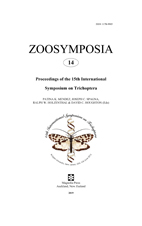Abstract
A formal list of the caddisflies of California has not been published since 1956, at which time just over 170 species were included. Since then, the estimate of Trichoptera richness in the state has doubled. We used just under 7,000 digital records from online repositories and museum databases to compile a preliminary faunal list. To gain a broader view of the distribution of caddisflies in California, we augmented this dataset with almost 46,000 larval biomonitoring records for Trichoptera from the California Digital Exchange Network. We compared this digital species list derived from collection records to three existing literature resources: Donald Denning’s original species list from 1956, a list by Donald Burdick in 2010, and the published records documented in the Distributional Checklist of Nearctic Trichoptera by Rasmussen & Morse in 2018. The California species richness for Trichoptera based on these resources is 333 species, with another 69 taxa occurring in collections that require expert review of the material before adding to these totals. Monitoring data, although extensive, did not contribute to the species list, but highlighted differences in collection location emphasis. Digital records can be powerful tools for compiling preliminary taxa and distribution lists, but oftentimes only partial verbatim label information (i.e. not containing full localities) limits further spatial analysis.

